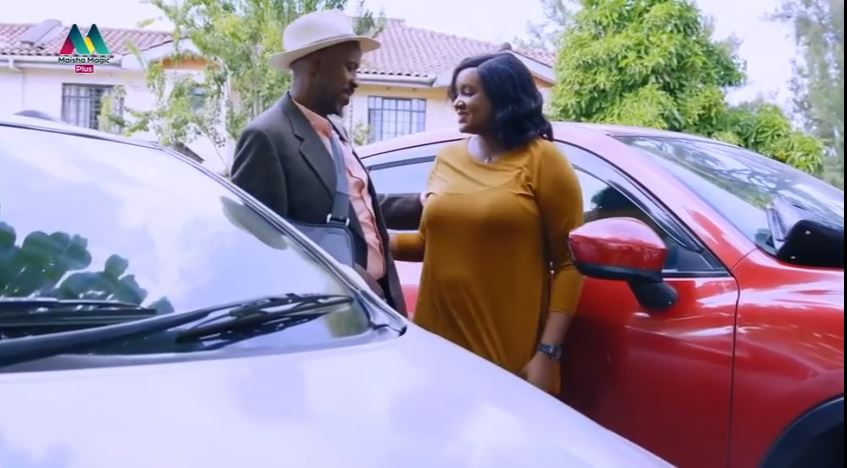Why the Canon EOS M50 Mark II is a Great Choice for Vloggers and Content Creators
The Canon EOS M50 Mark II, released in 2020, is a compact APS-C mirrorless camera tailored for vloggers and content creators, offering an affordable, user-friendly platform with professional-grade features. For Kenyan creators seeking to produce high-quality content for YouTube, TikTok, or Instagram, the M50 Mark II combines portability, solid performance, and social media-ready functionality. This article explores why the Canon EOS M50 Mark II excels for vlogging and content creation, its key selling points, competitors, target audience, and drawbacks, with pricing in Kenyan Shillings (KES).
Why the Canon EOS M50 Mark II is Great for Vloggers and Content Creators
The Canon EOS M50 Mark II is designed for creators who need a lightweight, versatile camera that delivers professional results without complexity. Weighing 387 grams (with battery and memory card) and measuring 116.3 x 88.1 x 58.7 mm, it’s highly portable, making it ideal for Kenyan creators filming on the go—whether capturing lifestyle vlogs in Nairobi, travel content in the Maasai Mara, or coastal scenes in Diani. Its intuitive interface and vlogging-specific features make it perfect for beginners and intermediate creators looking to step up from smartphone photography.
Key Selling Points
- High-Quality Video and Stills
The M50 Mark II features a 24.1MP APS-C CMOS sensor paired with a DIGIC 8 processor, delivering sharp 4K video at 24p (with a 1.6x crop) and Full HD 1080p at 60p. The APS-C sensor offers better low-light performance than 1-inch sensor cameras, ideal for indoor shoots or evening vlogs. It captures 24MP stills with Canon’s renowned color science, producing vibrant, Instagram-worthy photos. Support for vertical video caters to TikTok and Instagram Reels, streamlining social media workflows. - Vlogger-Centric Features
- Fully Articulating Touchscreen: The 3-inch, 1.04-million-dot vari-angle LCD flips 180 degrees for easy self-framing, perfect for solo vloggers. The touchscreen supports focus selection and menu navigation, simplifying operation.
- Eye Detection AF: Enhanced Dual Pixel CMOS AF with eye detection ensures sharp focus on faces, even during dynamic vlogs or when tracking moving subjects, though it’s less reliable in 4K mode.
- Creative Filters and Modes: Creative Assist and in-camera filters allow beginners to experiment with looks without extensive editing, ideal for quick social media posts.
- Interchangeable Lenses
The Canon EF-M mount supports a small but solid lens lineup, including the versatile EF-M 15-45mm f/3.5-6.3 IS STM (~KES 103,000 with kit) for everyday vlogging or the EF-M 22mm f/2 (~KES 32,000) for low-light and bokeh-heavy shots. EF/EF-S lenses can be used with an adapter (~KES 13,000), though this adds bulk. - Audio Capabilities
A 3.5mm microphone input supports external mics, like the Canon DM-E100 (~KES 12,900), for clear audio in interviews or outdoor vlogs. The included windscreen enhances built-in mic performance for windy conditions, such as coastal shoots in Mombasa. Clean HDMI output supports external recorders or monitors, boosting professional setups. - Livestreaming and Connectivity
Built-in Wi-Fi and Bluetooth enable seamless file transfers via the Canon Camera Connect app, simplifying uploads to social media. The camera supports direct YouTube livestreaming (requires 1,000 subscribers per YouTube’s rules) and webcam functionality via Canon’s EOS Webcam Utility, ideal for Kenyan creators hosting live sessions. - Compact and Lightweight Design
At 387 grams, the M50 Mark II is backpack-friendly, perfect for travel vloggers or digital nomads exploring Kenya’s landscapes. Its ergonomic grip and simple button layout make it easy to use, while the 2.36M-dot OLED viewfinder aids shooting in bright sunlight. - Affordability
The M50 Mark II body retails for approximately KES 77,400 (based on $599.99 at ~KES 129/USD, as of August 21, 2025). In Kenya, prices range from KES 75,000 to 85,000, though discontinued status may push second-hand prices to KES 90,000-100,000. The kit with the EF-M 15-45mm lens costs around KES 90,300-103,000, and the Content Creator Kit (with tripod grip and microphone) is ~KES 110,000. Refurbished bundles are often available on platforms like Amazon or Camera Kenya.
Competitors
The Canon EOS M50 Mark II faces competition from other mirrorless and compact cameras designed for vlogging. Key competitors include:
- Sony ZV-E10 (KES 90,000)
An APS-C mirrorless with superior Real-Time Eye AF, Product Showcase mode, and interchangeable lenses. It’s slightly pricier but lacks a viewfinder and has no headphone jack, though it offers better low-light performance. - Sony ZV-1 (KES 103,000)
A compact 1-inch sensor camera with vlogging features like Background Defocus. It’s more portable but lacks interchangeable lenses and the M50 Mark II’s larger sensor for low-light shooting. - Fujifilm X-S10 (KES 129,000)
An APS-C mirrorless with 5-axis IBIS and cinematic film simulation modes. It offers better stabilization and a headphone jack but is pricier and has less reliable autofocus. - Panasonic Lumix GH5 (KES 167,000)
A Micro Four Thirds camera with 4K 60p, unlimited recording, and weather sealing. It’s more advanced but has weaker autofocus and a higher cost, better suited for professionals. - Canon PowerShot G7 X Mark III (KES 97,000)
A compact 1-inch sensor camera with a 24-100mm lens and vertical video support. It’s less versatile due to its fixed lens but is more portable and has a brighter lens for low light.
Target Audience
The Canon EOS M50 Mark II is best suited for:
- Beginner to Intermediate Vloggers: Kenyan creators upgrading from smartphones who want professional-quality video and stills with an easy-to-use interface.
- Social Media Content Creators: Those producing content for TikTok, Instagram, or YouTube, leveraging vertical video and livestreaming capabilities for quick, engaging posts.
- Travel and Lifestyle Vloggers: Its lightweight design and flip-out screen make it ideal for capturing Kenya’s urban scenes, coastal beaches, or safari adventures.
- Hybrid Shooters: Creators balancing video and stills, using the 24.1MP sensor for vibrant photos suitable for social media or small prints.
It’s less ideal for advanced filmmakers needing 4K 60p, unlimited recording, or weather sealing, who might prefer the Panasonic GH5 or Canon EOS R10 (KES ~103,000).
Drawbacks
Despite its strengths, the M50 Mark II has limitations:
- Cropped 4K Video: The 1.6x crop in 4K mode reduces the field of view, requiring wider lenses or closer framing, and it uses slower contrast-detect AF instead of Dual Pixel AF, impacting focus reliability.
- No In-Body Stabilization (IBIS): Unlike the Fujifilm X-S10, it relies on lens-based stabilization or digital IS, which may result in shaky footage without a tripod or gimbal (~KES 15,000-30,000).
- Limited Lens Options: The EF-M lens lineup is small, and adapters for EF/EF-S lenses add bulk and cost, limiting versatility compared to Sony’s E-mount or Fujifilm’s X-mount.
- Short Battery Life: Rated for 305 shots (LCD) or 250 shots (EVF), or ~60-80 minutes of video, it requires spare batteries (~KES 7,000-10,000) for extended shoots.
- No Weather Sealing: The polycarbonate body isn’t dust- or splash-proof, requiring caution in Kenya’s rainy seasons or dusty environments like Tsavo.
- Discontinued Status: Canon has phased out the EOS M series, making new units scarce and pushing second-hand prices higher in Kenya (KES 90,000-100,000).
- No Headphone Jack: The lack of a headphone port hinders audio monitoring, a drawback for creators needing precise sound control.
Conclusion
The Canon EOS M50 Mark II is an excellent choice for Kenyan vloggers and content creators seeking a compact, affordable mirrorless camera with vlogging-friendly features. Its 24.1MP APS-C sensor, flip-out touchscreen, Eye Detection AF, and livestreaming capabilities make it ideal for producing high-quality content for YouTube, TikTok, or Instagram. Priced at around KES 77,400 (body) or KES 90,300-103,000 (with kit lens), it offers strong value compared to competitors like the Sony ZV-E10 or Fujifilm X-S10, especially for beginners and social media creators.
However, the cropped 4K video, lack of IBIS, limited lens options, and discontinued status may frustrate some users, particularly in rugged conditions or for advanced video needs. For beginner to intermediate vloggers, travel creators, or hybrid shooters in Kenya, the M50 Mark II is a versatile, user-friendly tool to elevate their content. Advanced users might consider the Panasonic GH5 or Canon EOS R10 for more robust features, though at a higher cost. Despite its quirks, the Canon EOS M50 Mark II remains a compelling choice for vlogging in 2025.
SARABI MAISHA MAGIC PLUS SEASON 1 EPISODE 76








You must be logged in to post a comment.